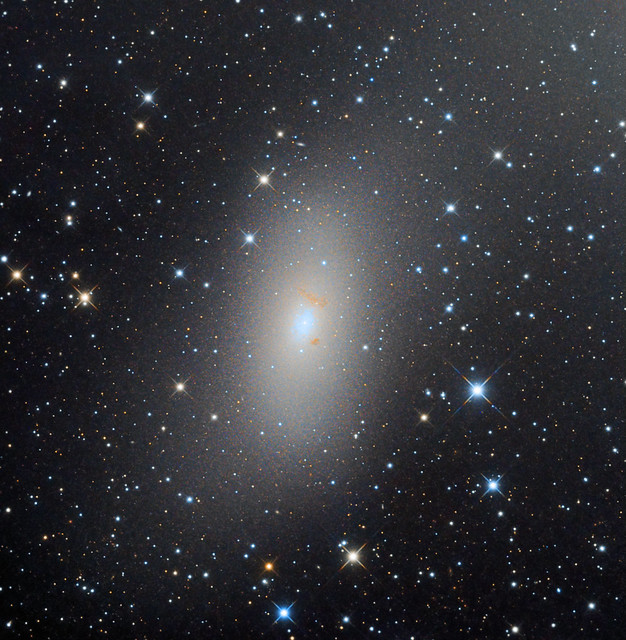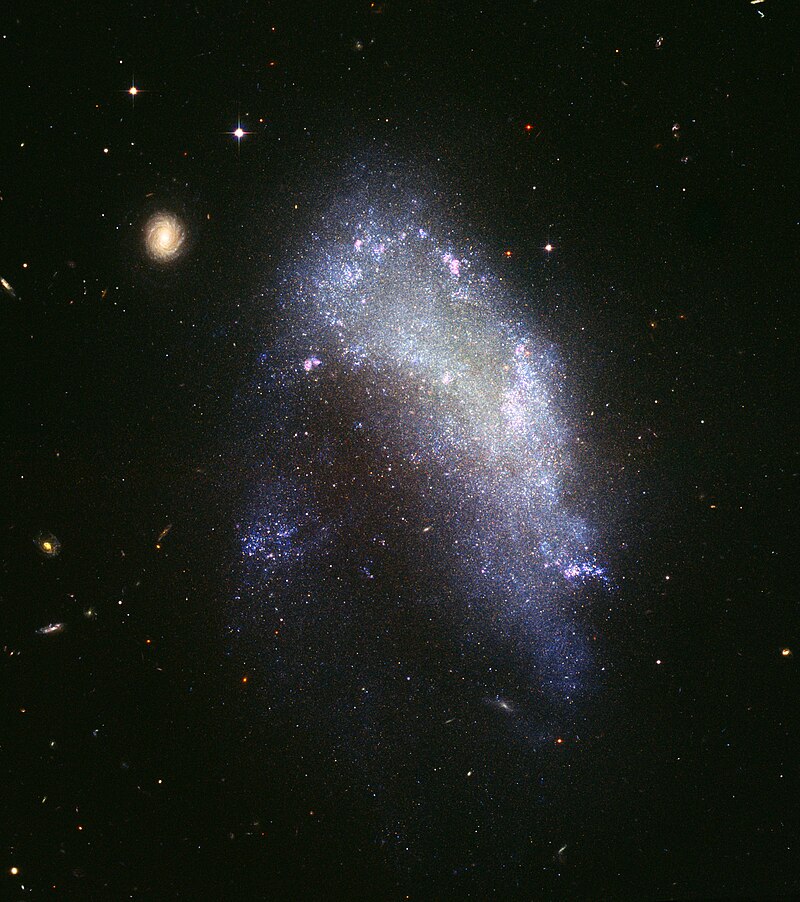Nitpicker wrote:With no evidence whatsoever, I am tempted to think of it as the "missing link" between globular clusters and disc-shaped galaxies. But I'll refrain.

Globular cluster 47 Tucanae and an irregular galaxy,
the Small Magellanic Cloud. Photo: Eder Ivan.
Compact dwarf elliptical galaxy M32 and large disk galaxy M31.
Compact blue dwarf galaxy, starburst galaxy I Zwicky 18.
HST/NASA/ESA.
Dwarf spheroidal galaxy Leo 1.
Photo: Australian Astronomical Observatory.
Globular clusters contain only old stars, and they are usually very compact. Being compact, they have a high surface brightness. They are metal-poor, often extremely metal-poor. All their stars are usually of the same age, and in those cases when a globular contains stars of different ages, the younger ones are not much younger than the older ones. The star formation of globular clusters stopped very long ago. Globulars always seem to be satellites of galaxies, and I've never heard of a "free-floating globular". Globulars come in certain sizes. For example, the largest globular cluster of the Milky Way,
Omega Centauri, has a diameter of roughly 150 light-years. There seems to be a limit to their mass, and Omega Centauri has
a mass of 5 million suns.
Galaxies can be isolated, or they can exist in groups. Dwarf galaxies are often satellites of larger galaxies, but they, too, can be isolated. Galaxies often have a low surface brightness. Galaxies often contain stars of several generations, and all galaxies that are currently forming stars contain both young and old stars. Most galaxies, with a very, very few exceptions (e.g.,
I Zwicky 18) are dominated by stars that are lot more metal-rich than the stars of globular clusters. Galaxies, even dwarf galaxies, are usually larger and more massive than globular clusters. For example, compact dwarf
elliptical galaxy M32 has a mass of 3 billion suns, compared with 5
million suns for globular cluster Omega Centauri. And puny dwarf spheroidal galaxy
Leo 1 may have a mass of 20 million suns, compared with 5 million suns for Omega Centauri. As for the typical sizes of galaxies and globulars,galaxies are typically a lot larger. M32 is 8,000 light-years in diameter, compared with 150 light-years in diameter for Omega Centauri.
So I don't think that globulars and dwarf galaxies are very similar at all.
Ann
 Wolf-Lundmark-Melotte
Wolf-Lundmark-Melotte








